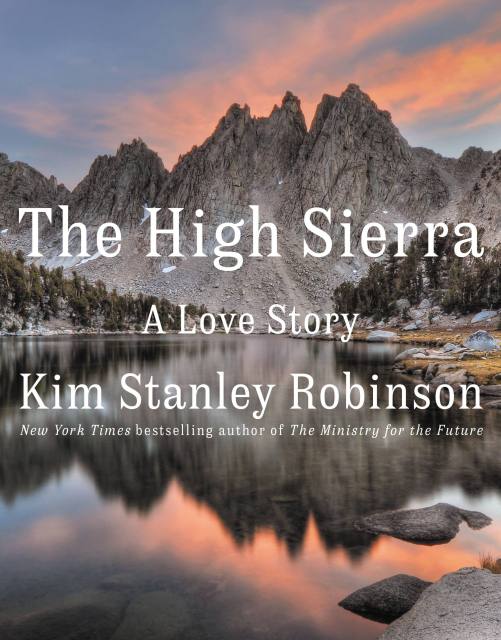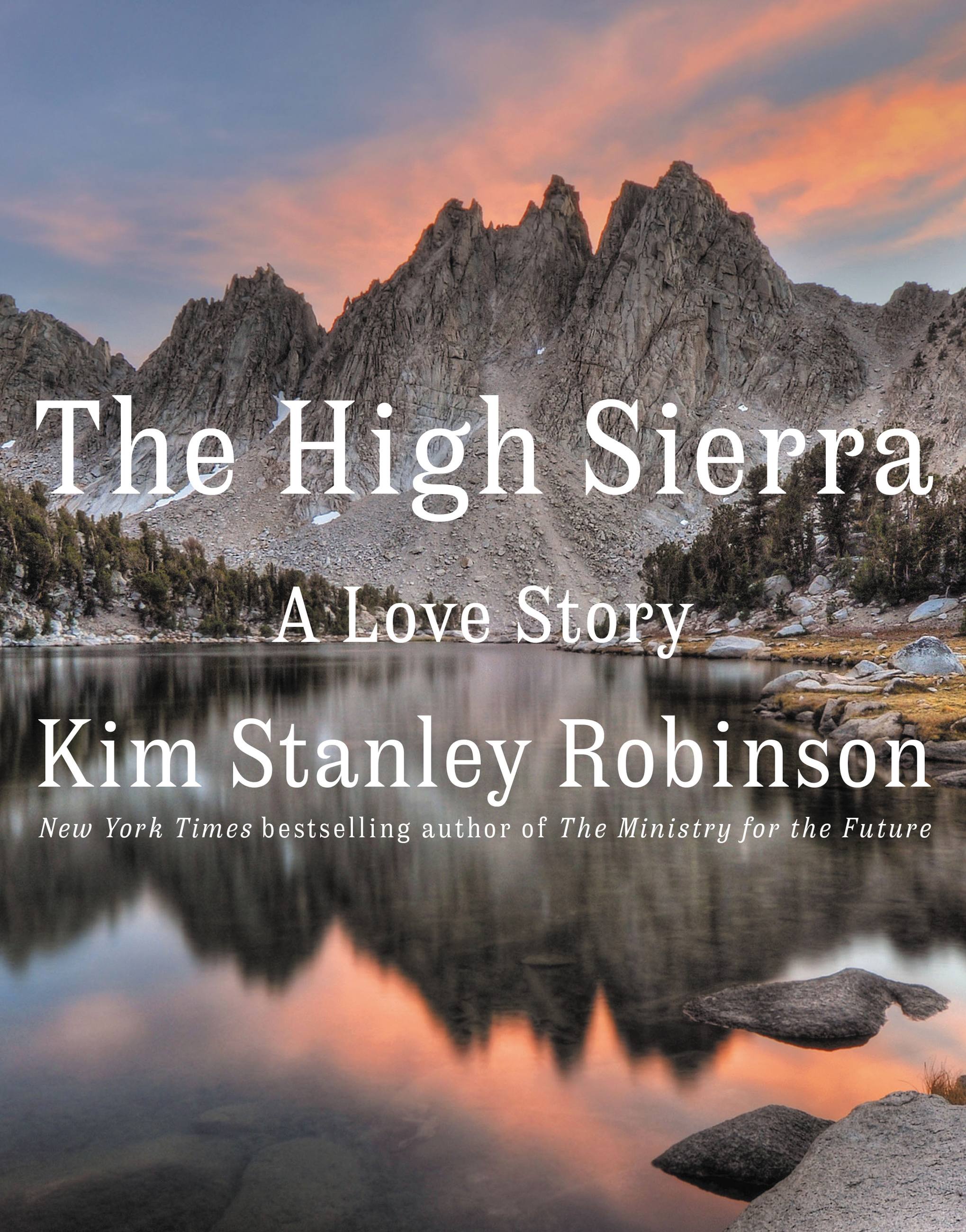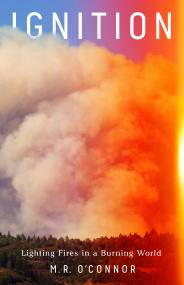Promotion
Use code MOM24 for 20% off site wide + free shipping over $45
The High Sierra
A Love Story
Contributors
Formats and Prices
Price
$18.99Price
$24.99 CADFormat
Format:
This item is a preorder. Your payment method will be charged immediately, and the product is expected to ship on or around May 10, 2022. This date is subject to change due to shipping delays beyond our control.
Also available from:
A “sublime” and “radically original” exploration of the Sierra Nevadas, the best mountains on Earth for hiking and camping, from New York Times bestselling novelist Kim Stanley Robinson (Bill McKibben, Gary Snyder).
Kim Stanley Robinson first ventured into the Sierra Nevada mountains during the summer of 1973. He returned from that encounter a changed man, awed by a landscape that made him feel as if he were simultaneously strolling through an art museum and scrambling on a jungle gym like an energized child. He has returned to the mountains throughout his life—more than a hundred trips—and has gathered a vast store of knowledge about them. The High Sierra is his lavish celebration of this exceptional place and an exploration of what makes this span of mountains one of the most compelling places on Earth.Over the course of a vivid and dramatic narrative, Robinson describes the geological forces that shaped the Sierras and the history of its exploration, going back to the indigenous peoples who made it home and whose traces can still be found today. He celebrates the people whose ideas and actions protected the High Sierra for future generations. He describes uniquely beautiful hikes and the trails to be avoided. Robinson’s own life-altering events, defining relationships, and unforgettable adventures form the narrative’s spine. And he illuminates the human communion with the wild and with the sublime, including the personal growth that only seems to come from time spent outdoors.
The High Sierra is a gorgeous, absorbing immersion in a place, born out of a desire to understand and share one of the greatest rapture-inducing experiences our planet offers. Packed with maps, gear advice, more than 100 breathtaking photos, and much more, it will inspire veteran hikers, casual walkers, and travel readers to prepare for a magnificent adventure.
Genre:
-
“A titan of science fiction masters a new form in this winsome love letter to California’s Sierra Nevada mountain range. Constructed from an impassioned blend of memoir, history, and science writing, The High Sierra chronicles Robinson’s 100-plus trips to his beloved mountains… From descriptions of the region’s multitudinous flora and fauna to practical advice about when and where to hike, this is as comprehensive a guidebook as any, complete with all the lucid ecstasy of nature writing greats like John Muir and Annie Dillard.”Adrienne Westenfeld, Esquire
-
“[A] loose-limbed quality is what makes The High Sierra so appealing. But it’s also something more. Robinson clearly accepts the limits of what nature writing can do, in his hands at least. After a stunning solo hike, he tries to describe it to a friend. But he discovers that 'a day like that can’t be shared; that must not be what they are for...' Rationality is a word with a dry, ascetic feel to it. Perhaps reasonableness comes a little closer to the animating spirit of The High Sierra. That sounds strange, I know, for a book whose purpose is analyzing Robinson’s “crazy love” of the mountains. But it’s a way of getting at the wholeness of his complex approach to the natural world: inquisitive and emotional, thoughtful and immediate, long-range and short-range, drawing on all the variables in the human spirit.”Verlyn Klinkenborg, The Atlantic
-
“The High Sierra is as sprawling and full of ups and downs as the Sierra Nevada itself, those majestic mountains… the memoir offers fast-paced and highly readable explorations of Sierra history, people, geography, geology and how the range’s rocks can shift your mind… the book is most powerful for demonstrating how a mountain range, and its history, can inspire visions of the future.”Joe Mathews, San Francisco Chronicle
-
"In passionate paragraphs and stunning photographs, The High Sierra details the mountains [Robinson has] known for nearly 50 years, into which he’s made more than 100 trips in hopes of protecting the glorious range for future generations."Bethanne Patrick, Los Angeles Times
-
“The High Sierra is as beauteous as the landscape it pays homage to. It blends memoir, travel, geography history, and photography… Even if you never plan to scale the heights of this mountain range and glamping is more your style, there are many wonders to be found on the pages of this glorious paean to the great outdoors.”Oprah Daily
-
“I ached all over—metaphorically—when I finished Kim Stanley Robinson’s love letter to the Sierra Nevada… a trek unto itself, dotted with scenes so precisely described you feel you’re there… Robinson’s ambitious book blends nature writing, memoir, history and philosophy… The book gives new dimension to the term “immersive.” Not only does Robinson communicate the wonder of the High Sierra, he makes a compelling argument for preserving places like it… Travel light. Watch your step. Look at the glaciers before they’re gone.”Carlo Wolff, Pittsburgh Post-Gazette
-
“[A] multiplicity of perspectives makes The High Sierra an engaging read even if you've never been to California.”Christian Holub, Entertainment Weekly
-
“An invitation to an astonishing journey… Robinson is the reigning high priest of speculative science fiction, a master builder of alternative futures in his many novels… It’s hard to think of another writer who can touch upon climatology, geology, Gary Snyder, LSD, Aristotle, botany, zoology and Spinal Tap in a book about a mountain range… Robinson is a passionate and eloquent companion.”Marc Weingarten, Wall Street Journal
-
“Equally adept at writing about the distant past, the near future, and locales as far apart as Alpha Centauri and Orange County, Robinson is one of the most environmentally astute science fiction writers of his generation… Whether writing fiction or nonfiction, he gets the details right… The High Sierra brims with useful information… Robinson is able to spot what distinguishes an item—a geological specimen, a fellow traveler on the trail, a marmot sunning itself—and convey how it fits into the grander scheme of life in the Sierra. He communicates his observations without any kind of overblown mysticism, but with a deep sense of gratitude, an appropriate sense of wonder, and a welcome sense of humor… there are some truly harrowing maneuvers. When hair-raising events occur, the author describes the action lucidly and grippingly… Anyone who opens their heart to the mountains—veteran trekker, casual explorer, or complete neophyte—will be well rewarded by this singular book."Michael Berry, Christian Science Monitor
-
“Even after spending a thousand days in the high country and reading everything I can find about the Range of Light, The High Sierra surprised and delighted me… It has the heft and beauty of a coffee table book, along with the clear approachable prose, inter-personal struggles, and narrative flow that Robinson is known for… Robinson joins a choir of mystics, poets, and activists who advocate for a return to our original home in the wild.”Leonie Sherman, Sierra Magazine
-
“[The High Sierra] has passion galore and glorious moments when science and poetry meet.”Jeff Van Der Meer, Washington Post
-
“Award-winning science fiction writer Kim Stanley Robinson tackles a more earthbound subject in this personal guide to the planet’s 'best hiking mountains.' Combining backpacking advice, geological history, intimate recollections, and breathtaking photography, this eclectic compendium will appeal to a range of adventurous readers.”Christian Science Monitor
-
“A book that operates on a variety of levels at once. In part, it is a memoir, tracing the author’s fascination and engagement with the Sierra, going back nearly half a century… At the same time, this is an expansive inquiry, a field guide to the region and its ecosystem.”David L. Ulin, Alta Online
-
“A capacious and truly original work of nonfiction… A mashup of travelogue, geology lesson, hiking guide, history and meditation, all wrapped in a revealing and personal memoir (and illustrated with scores of gorgeous color photographs and illustrations), the book is, in essence, an exuberant celebration of finding purpose in nature… The High Sierra should not be narrowly viewed as a book only for the die-hard outdoorsperson. Robinson’s greater project, at which he succeeds splendidly, is to share the magic of his personal happy place, to promote not only its admiration but also its preservation.”Robert Weibezahl, Bookpage
-
“A fascinating combination of memoir, travelogue, scientific overview, history and much more. Robinson cleverly breaks up his book into short chapters, interspersing these various strands with one another… This handsome volume is also generously illustrated, primarily with Robinson’s own color photographs.”Norah Piehl, Bookreporter.com
-
“An enthralling blend of memoir, history, and science… Robinson vividly conveys his passion for the Sierra mountains… his heartfelt rendering of intense emotional interactions with the natural world pulsates with life. Fans of Bill Bryson’s A Walk in the Woods will be captivated.”Publishers Weekly (starred review)
-
“In his new memoir Robinson takes a turn for the terrestrial, covering a half-century of writing, thinking, and adventuring across our altitudinous backyard, tracing the origins of both backpacking and environmentalism.”Hillary Louise Johnson, Sactown Magazine
-
“Kim Stanley Robinson shows us that the best hiking mountains on earth are the earth itself. Learning how to make anything into materials for our sleep, shelter, yoga, or crazy concentration, hunting, gathering, and laughing. Being both empty and full. Stan Robinson's radically original vision of nature itself makes the world wild.”Gary Snyder, author of The Practice of the Wild
-
"The High Sierra: A Love Story is exactly that, a passionate bow to one of the great mountain ranges in the world. The power of Kim Stanley Robinson's imagination is known to us as his faithful readers. But what emerges as a surprise in this memoir of place is how he comes to know what he knows from the ground upward. With over 100 trips etched on to the soles of his feet, we witness a man in love with the world, both human and wild. We are taken into the open heart of his storytelling, that carries his awe and wonder and knife-edged perceptions into a reimagining of geologic time through the physical ground truthing of his body. I loved this book—just as I loved The Ministry for the Future. They are companion volumes as to why we should care about this beautiful, broken world we call home.”Terry Tempest Williams, author of Erosion: Essays of Undoing
-
“This is a sublime book; maybe not since Muir's My First Summer in the Sierra has anyone managed to convey in words the sheer exhilaration that pours from this most charmed of American landscapes. Robinson provides a wonderfully readable biography of a place—but also a revealing autobiography of one of our most important and delightful writers.”Bill McKibben, bestselling author of The End of Nature and Falter
-
“A colorful, digressive journey into incomparable terrain… Robinson pays homage to the range’s magnificence.”Kirkus Reviews
- On Sale
- May 10, 2022
- Page Count
- 560 pages
- Publisher
- Little, Brown and Company
- ISBN-13
- 9780316306812
Newsletter Signup
By clicking ‘Sign Up,’ I acknowledge that I have read and agree to Hachette Book Group’s Privacy Policy and Terms of Use







